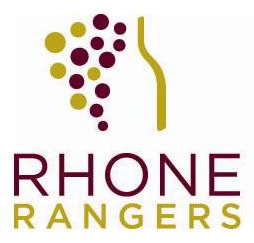"From out of the west with the speed of light and a hearty ‘hi-yo Cinsault’..."
There was no clatter of hooves beating upon the dusty pavement of downtown Los Angeles, no fiery steed, no faithful Indian companion. There were SUVs revving at the traffic light, parking lot attendants and a pretty good Indian restaurant around the corner.
The
Rhone Rangers did, however, ride into Los Angeles to pour their wines on June 2, 2012 at Vibiana, a former cathedral in downtown Los Angeles which has been converted into an event venue. It’s a sunny and open space with beautiful architectural lines.
In case you are uninitiated, there is an organization of winemakers who are wild about the grapes of the Rhone Valley. These Rhone Rangers - mostly of the U.S. West Coast - meet every so often to pay tribute to those French grapes. It’s a tasting event like no other, where the expression of the Rhone grape varieties in other terroir is explored.
Leading Rhone Ranger
Randall Grahm, of Bonny Doon Vineyards, referred to the event space, Vibiana, as a “decommissioned church” in a tweet before the event began. It still shows up on Google Maps as “Cathedral of St. Vibiana.” Like many of us, Mr. Grahm worships at the altar of the vine.
Grahm’s Bonny Doon VIneyards was present, with Grahm himself behind the table. I had never run into him at a Southern California tasting event before, so it was a real treat to get a face-to-face meet with the witty, erudite, social-media-addicted, original Rhone Ranger of the California wine world. Since he is noted for his minute-by-minute presence on Twitter, I wasn’t too surprised to catch him in what looks like mid-tweet. I apologize that I didn't think to get another, more suitable, image in the crush of people around the Bonny Doon table. I did get the chance to speak with him, briefly, while tasting. His comments will be featured in an upcoming podcast on the
Now And Zin Wine Report.
The
Bonny Doon wines are represented by the iconic Le Cigare Volant, described by Grahm as “
A blend of grenache, syrah, and mourvèdre with just a soupçon of cinsault.” I sampled a different kind of red, the Clos de Gilroy, a Grenache/Syrah/Cinsault blend taken from various Monterey County vineyards. It’s a fresh and vibrant red that’s perfect for summer use. Speaking of warm weather, the 2010 Le Cigare Blanc, Beeswax Vineyard, is an exciting white blend in which Grahm tips his beret to Châteauneuf-du-Pape. Roussanne and Grenache Blanc mix it up with gorgeous expressions of fruit, minerals and acidity. Bonny Doon‘s 2011 Vin Gris de Cigare rosé shows light cherry and strawberry flavors and aromas in a nice, dry framework.
Winemaker’s daughter
Maggie Tillman poured the fruit of her father’s labor.
Bob Tillman is the grower and winemaker for the Paso Robles family outfit of
Alta Colina. Big, attention-getting wines are the rule here, like their 2010 Estate Marsanne. It spends 18 months in oak and is not a bit shy about it. This one would be a great choice for the holidays, with its bounty of flavor. Their refreshing 2011 Grenache Blanc is the first varietal release they’ve done with that grape. Big bold reds - Grenache, Mourvedre, GSM - round out the menu.
Acquiesce Vineyards, near Lodi, brought some of the more beautiful bottlings I found at the event. Their wines are packaged in imported French bottles. Owner and winemaker
Susan Tipton says Acquiesce is Lodi’s only all-white wine winery. There are some interesting facets to their wines. The herbaceousness and salinity of the Grenache Blanc, the nuttiness of the Roussanne and the memory of snap peas in the Belle Blanc blend of those two grapes are delightful. The rosé is made from Grenache, and produced like a white wine, not from a juice bleed-off.
Cornerstone Cellars of Napa Valley has a rosé that was a big hit on this warm afternoon. Their 2011 Stepping Stone Corallina comes from their millennially-priced line. Green elements indicate the whole cluster press that was used and this pinkie is also not of the saignée method. In fact the fruit comes from their dedicated Syrah vineyard intended only for use in the rosé
Ridge Vineyards has been doing great things with grapes since before Apple put the “i” in Cupertino. They are probably best known for their extensive line of Zinfandels, but for this show they stayed true to the Rhone varieties. Tart Carignan, brooding Petite Sirah and spicy Syrah all bear the mark of Rhone specialist
John Olney, who took charge of the Lytton Springs winery in 1999.
Rhone specialists
Curtis Winery of Santa Barbara County brought cool-climate Syrah and Grenache which display a tartness I like a lot. Their Heritage Blanc, a 60/40 mix of Viognier and Roussanne, has a lovely floral aspect and a nice acidity.
Every winery seemed to have a great, floral, aromatic Viognier on hand.
Clayhouse Wines,
Adelaida Cellars and
Ecluse Wines - all of Paso Robles - are standouts. Ecluse does theirs in ⅓ steel, ⅔ oak for a full and creamy treat.
Follow Randy Fuller on Twitter







